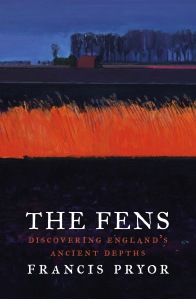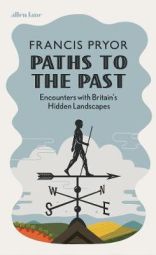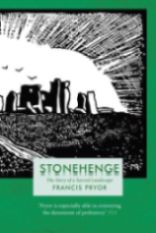For many years I used to be a member of the Society for American Archaeology, largely because I found its journal, American Antiquity a constant source of ideas and enlightenment. Eventually my groaning bookshelves couldn’t cope any longer, so reluctantly I dropped my subscription. The SAA was founded in 1934, a year before its British equivalent, The Prehistoric Society, and today has an astonishing 7,000 members. Its Annual Meeting is a huge event, more like a road show than a learned society convention, and when I worked in Canada in the 1970s I managed to go to a couple of them, one of which was in Toronto, the home of The Royal Ontario Museum, where I worked as an Assistant Curator. In 2014 it will be held in Austin Texas on April 23-27 (check it out at saa.org). In 2014 the Annual Meeting will also involve a Blogging Festival and I have been asked by the festival organiser to submit a short piece, based around the theme the Good, the Bad and the Ugly in archaeological blogging. Anyhow, for better or for worse, this is what I wrote.
Spaghetti Blogging
Francis Pryor
Rule One: avoid clever titles, unless they’re funny. Rule Two: stick to the point. Rule Three: eschew obfuscation (avoid lack of clarity). Rule Four: don’t patronise with obvious explanations. Rule Five: don’t lay down the law. Follow these rules and you’ll be a good blogger; ignore them and you’ll become a Professor before you’re thirty.
Now I want to have a brief rant. Academic archaeological writing is ponderous, wordy and inelegant. It flows with all the suppleness of a disintegrating iceberg. Style doesn’t seem to matter anymore. It’s as if the writer expects his or her readers to experience pain rather than pleasure while they are acquiring new knowledge. Now I don’t expect archaeologists to compose mellifluous prose à la Jane Austen or F. Scott Fitzgerald, but please, at least make a small effort: try to avoid constant repetition of the same words. And do you always have to be quite so laboriously Politically Correct? I am well aware of the difference between gender and sex, but do I have to have it shoved down my throat (so to speak) every time I open an article, note or paper on anything that touches on human inter-relationships? I wouldn’t mind if it wasn’t for the fact that these papers are so dreadfully written; they’re also invariably humourless. The trouble is, the content gets forgotten or ignored because its delivery is so flawed.
The trouble is, too, that bad writing so often conceals woolly thinking, or half thought-through ideas – which are, by definition, impossible to express clearly. I’m absolutely convinced that much of the career-enhancing theoretical rubbish that was written in the ‘80s and 90s about top-down hierarchical societies, led by Big Men, who exchanged Symbols of Power, was only made possible through high-flown, verbose academic language. That, and mutual back-scratching on a huge scale. Had these concepts been described in plain English we would all have seen through them. As it was, I kept my head down and scraped away with my trowel, hoping to find the palace of the Big Man who built the local equivalent of Stonehenge. But of course it never happened, because neither he nor his swanky home had ever existed. It was all academic clap-trap.
I dearly wish there had been some blogs around in those days, because I am convinced they would have burst the bubble much, much earlier. The trouble was that academics only spoke to other academics. I can remember trying to persuade colleagues that Bronze Age fields with entrances at the corners had been laid-out with livestock (usually sheep or cattle) in mind. Any working farmer would recognise the pattern immediately; indeed, medieval market places were invariably arranged with corner entrances. Despite this, my suggestion was usually greeted with rather patronising, non-committal smiles, as if to say: who does he think he is? Sadly a recent conference on ancient farming did not feature a single farmer. Just academics.
In the 1960s and ‘70s Processualists taught us that archaeology was a science and that therefore photographs must be dull, colourless and ‘objective’, and all with over-prominent scales. Anything that attempted to convey mood, atmosphere or landscape was completely out. And didn’t those dreary photos that defaced so many excavation reports, send you to sleep? Oh, and while I’m on the subject, why do writers of academic archaeology feel it essential to dispense with all punctuation
I only joined the blogging community at the start of 2012 and I have to confess I find it addictive. I used to keep a diary, but that has now been taken-over by the blog. And why do I like it? For a start, I’m one of those people who has to write. I know that sounds pretentious, but it’s a fact, nonetheless. Given that relatively harmless addiction, it’s good to have a readily available outlet and one, too, that uses the photos I generate all the time – and again, photography’s another minor addiction, although I will never be half as good as Bill Bevan, at Sheffield University, whose pictures in Walk into Prehistory (Frances Lincoln, London, 2011) are simply breath-taking. My blog may not be great Art or Thought and it won’t bring me academic advancement (and anyhow, I’m too old and past it, for that), but I hope it’ll bring archaeology to a wider audience, because I also write about some of the other things in my life, like the sheep, the garden, the crime books and of course, the occasional intemperate rant. And a useful tip: my brother-in-law checks my scripts and filters out words like ‘slimeburgers’ in case litigious commercial caterers decide to prosecute (which I gather they do at the drop of a hat). For what it’s worth, too, I also Tweet (@pryorfrancis) to help build-up my blog’s followers.
So I see my blog as a way of uniting life and archaeology. I try to write in plain English and I’m delighted to see that other bloggers are doing the same. I also try to use good photos, and again, other bloggers take good artistic pictures, too. OK, so far our efforts are still at the individual level, but does that matter? I think not. Indeed, if anything, it’s a strength, as corporate blogs can be a yawn. If the internet has anything to teach, it is that movements can build and grow from the bottom-up. You don’t need to go viral to have a huge and long-lasting effect. If enough people start to blog about archaeology and then gradually broaden their scope, maybe our subject will become less theory-obsessed and more relevant to modern life. Why do so many archaeologists choose to ignore sources of information and inspiration that are born of people’s experience of ordinary life? If they blogged they’d soon realise the error of their ways.
I see the current small, but growing, community of archaeological bloggers as so many militant moles who are mining away at the foundations of those loathsome ivory towers that were erected in the ‘50s and 60s to keep our fascinating subject above and beyond the aspirations of ordinary people. Who knows, but with luck we’ll soon bring them crashing to the ground.















